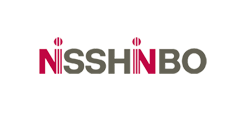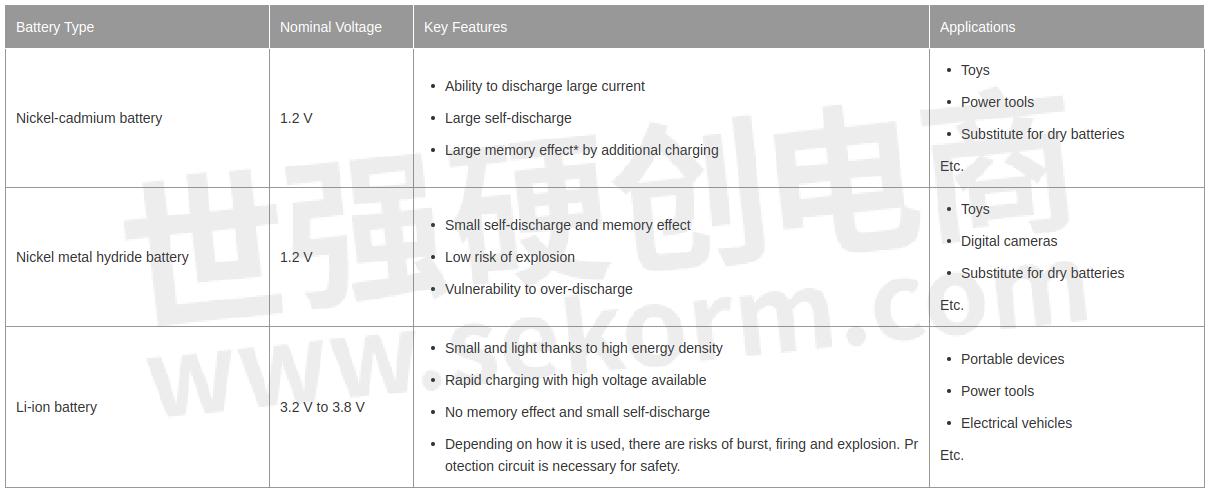Volume 3 Changes in Applications Using Li-ion Batteries -Customer Transition along with Application Expansion

The last time, I talked about how the performance and packages of protection ICs developed along with market needs and technological advancement. In this volume, I will tell you about the expansion of applications using Li-ion batteries and the transition of customers using Nisshinbo's protection ICs.
The world’s first application adopting the so-called “Li-ion battery” was portable video cameras launched in 1992, and that type of battery also started to be equipped in handy terminals a little later. Mobile phones and laptop PCs, which were expected to make tremendous market growth at that time, also adopted Li-ion batteries. However, some of those applications had used large-capacity, environmentally friendly nickel-metal hydride batteries which had been put to practical use about two years before Li-ion batteries and were expected to replace nickel-cadmium batteries that had been conventional representative small secondary batteries. As two new batteries appeared almost at the same time, there were some periods when adopted batteries were different (nickel-metal hydride batteries or Li-ion batteries) according to models even among the same applications.

A phenomenon where charge capacity decreases gradually when a battery is charged additionally with battery energy remaining.
Nickel metal hydride batteries and Li-ion batteries adopt different charging control methods from each other. While charging of nickel-metal hydride batteries is controlled by the -ΔV method or dT/dt method in general, the CC-CV method is used for Li-ion batteries. For instance, some mobile phones of a manufacturer adopted charging systems that could correspond to both batteries, and we were required to provide protection ICs the specifications of which went with such a system.
The difference in Charging Methods

Also, early mobile phones were equipped with two Li-ion batteries in serial, because one Li-ion battery could not output enough voltage to power the system. However, the enormous need for small-size and light mobile phones facilitated the improvement of power supply systems of phones, which made all the mobile phones operate with only one Li-ion battery.
Except for mobile phones and laptop PCs, the use of Li-ion batteries also expanded to digital cameras and portable video games. During this expansion, mobile phones were replaced by smartphones and tablets, which also use Li-ion batteries. This is how Li-ion batteries have made a rapid growth mainly in IT devices.
In this way, Li-ion batteries prevailed in IT devices, and the spread also occurred in other applications except for the IT field, especially in powertrains. Various applications including vehicles, home appliances, and so on use power systems with Li-ion batteries: for example, assisted bicycles, electric motorcycles, transfer robots, power tools, stick or robot vacuums, electric toothbrushes, shavers, e-cigarettes, and hearing aids. The remarkable application is vehicles, as they are the largest application that will facilitate the Li-ion battery market to expand in the future. At first, vehicles also adopted nickel-metal hydride batteries, but the adoption of Li-ion batteries has been increasing steadily. In particular, Company T, located in the United States, realized a breakthrough by equipping their electric vehicles with over 7,000 18650-size Li-ion batteries which are usually used in portable devices. I could never come up with the idea to get a car operated with dry-cell-size batteries.

Using over 7,000 18650-size Batteries Manufactured by Company T
As various applications came to adopt Li-ion batteries, customers for us IC manufacturers gradually changed, too. Li-ion batteries were said to have risks of heat generation and firing by overcharge, short circuit, etc. from the very beginning of the market launch, so battery cells alone were never sold even to B-to-B customers; they were sold only in the style of battery packs with protection circuits constructed by battery manufacturers. This means that battery manufacturers not only developed battery cells and packs but also designed protection circuits, so we IC manufacturers promoted and sold protection ICs to battery manufacturers. However, the distribution style of Li-ion batteries changed gradually. Some manufacturers began to develop and assemble battery packs in Taiwan, which had been famous for assembly factories of PCs at that time. Also, battery cells started to be developed and manufactured not only in Japan but in China and South Korea, which made it easy to obtain naked battery cells called bare cells. This led to the appearance of manufacturers which fabricated protection circuits and cells and produced battery packs. Subsequently, the number of manufacturers specialized in developing battery packs started to increase in China and South Korea, and module manufacturers focusing solely on protection circuits emerged gradually, too. As a result, Li-ion battery pack production was divided into three, and each of them was left to Li-ion cell developers, protection circuit developers, and battery pack assembly factories. In accordance with such a changing situation, we IC manufacturers changed Nisshinbo customers from battery cell manufacturers to protection circuit developers. The line of development has been further evolving and applications manufacturers have come to put up a development department for battery packs. Currently, a production style has become mainstream where applications manufacturers design basic circuits while factories in China and/or Taiwan assemble and produce battery packs.
In summary, as an IC manufacturer, customers in Nisshinbo contact lists transferred from battery cell manufacturers to battery pack manufacturers, from battery pack manufacturers to protection circuit module manufacturers, and from protection circuit module manufacturers to applications manufacturers.
At first, Li-ion batteries were released in 18650-size cylindrical-type packs, and the shape of battery packs evolved from rectangular type to pouch type. Particularly, the appearance of pouch-type battery packs enabled Li-ion batteries to be fabricated freely in size and shape, which resulted in a wider variety of applications adopting Li-ion batteries.

At present, many designers will first come up with Li-ion batteries as the power source when considering battery-powered systems, won’t they? I suppose the number of applications using Li-ion batteries will increase. On the other hand, I also suppose that many people are interested in how the post-Li-ion batteries will be. I hope I can talk about post-Li-ion batteries at another time.
- +1 Like
- Add to Favorites
Recommend
- Evolution of Performance and Package from Beginning to Present of protection ICs
- Future of Li-ion Battery Protection ICs
- Littelfuse Unveils Latest eFuse Protection ICs LS05006VPQ33 for USB Type-C Port Protection
- Measures for Trouble in Li-ion Battery Protection Circuits
- Littelfuse Expands eFuse Protection ICs Series to Address More Diverse Demanding Applications
- Littelfuse Announces eFuse Protection ICs Series,Designed for heavy-use consumer electronics, data communications, and industrial applications
- New High Side Switch ICs with User-Definable Protection Achieve Optimized Performance in Automotive Applications
- What Protection Devices can be Used to Protect Set-Top Box Protection?
This document is provided by Sekorm Platform for VIP exclusive service. The copyright is owned by Sekorm. Without authorization, any medias, websites or individual are not allowed to reprint. When authorizing the reprint, the link of www.sekorm.com must be indicated.





























































































































































































































































































































































































































































































































































































































































































































































































































































































